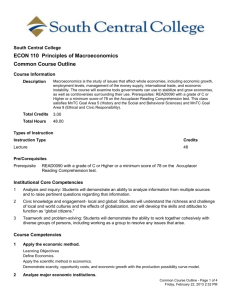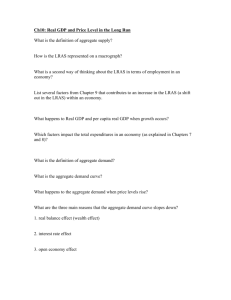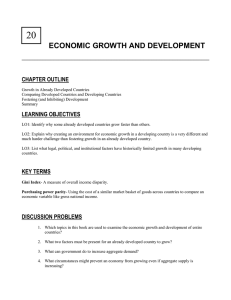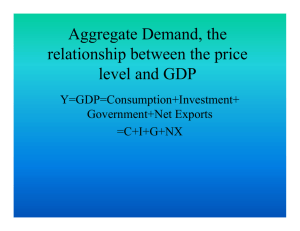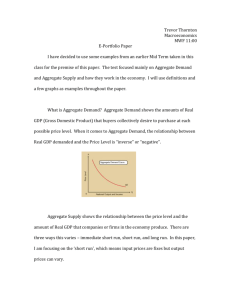Aggregate Demand and Aggregate Supply An aggregate demand
advertisement
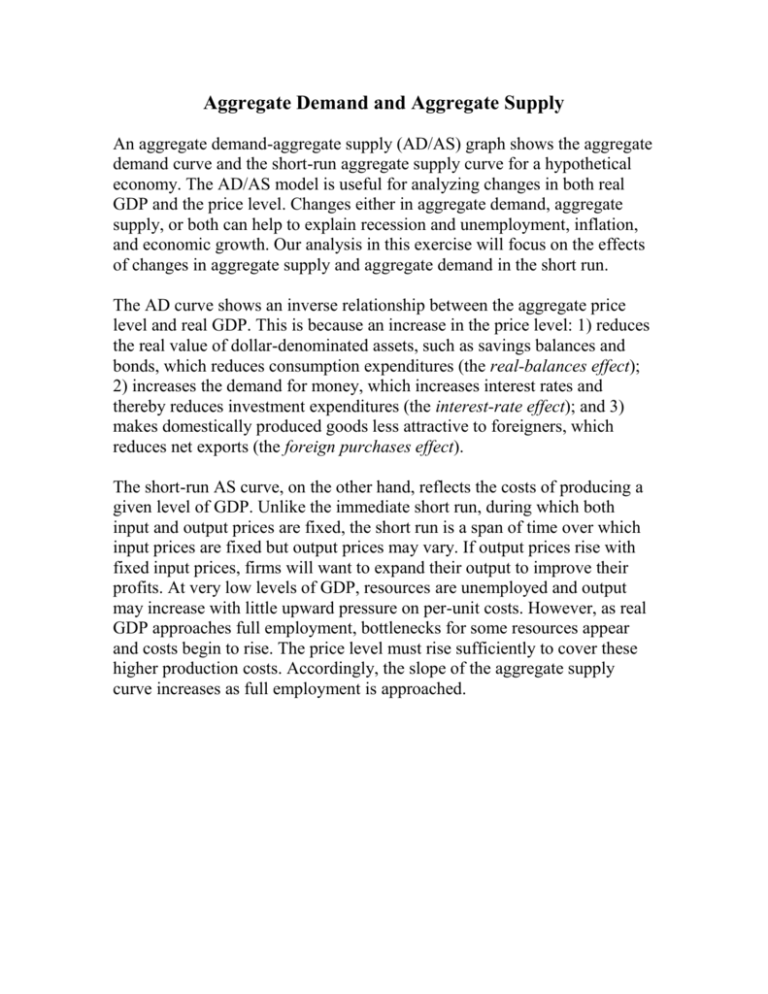
Aggregate Demand and Aggregate Supply An aggregate demand-aggregate supply (AD/AS) graph shows the aggregate demand curve and the short-run aggregate supply curve for a hypothetical economy. The AD/AS model is useful for analyzing changes in both real GDP and the price level. Changes either in aggregate demand, aggregate supply, or both can help to explain recession and unemployment, inflation, and economic growth. Our analysis in this exercise will focus on the effects of changes in aggregate supply and aggregate demand in the short run. The AD curve shows an inverse relationship between the aggregate price level and real GDP. This is because an increase in the price level: 1) reduces the real value of dollar-denominated assets, such as savings balances and bonds, which reduces consumption expenditures (the real-balances effect); 2) increases the demand for money, which increases interest rates and thereby reduces investment expenditures (the interest-rate effect); and 3) makes domestically produced goods less attractive to foreigners, which reduces net exports (the foreign purchases effect). The short-run AS curve, on the other hand, reflects the costs of producing a given level of GDP. Unlike the immediate short run, during which both input and output prices are fixed, the short run is a span of time over which input prices are fixed but output prices may vary. If output prices rise with fixed input prices, firms will want to expand their output to improve their profits. At very low levels of GDP, resources are unemployed and output may increase with little upward pressure on per-unit costs. However, as real GDP approaches full employment, bottlenecks for some resources appear and costs begin to rise. The price level must rise sufficiently to cover these higher production costs. Accordingly, the slope of the aggregate supply curve increases as full employment is approached. For #1-3, DRAW a correctly labeled AD/AS graph for each problem, then adjust your graph according to the question. The economy is initially at the full employment level of real GDP, labeled Qf, and the price level is stable at price level Pe. 1. Starting from full employment, what will be the impact on real GDP and the price level of an increase in consumption expenditures? 2. Suppose the economy is operating at full employment and prices are stable. All else equal, will an increase in wages and salaries increase the aggregate price level? Hint: Does an increase in wages and salaries affect AS, AD, LRAS, all or none? 3. Starting from a full-employment and stable price equilibrium, suppose aggregate demand decreases. Which will result in a deeper recession—if the price level falls or if it remains the same? Hint: Go to http://www.whitenova.com/thinkEconomics/simul.html and find which scenario matches this one For #4, you may use a graph to help explain your response. 4. The late 1990s were a period of dramatically rising stock values and rising labor productivity. Real GDP increased, yet prices remained relatively stable. How might this be explained by the AD–AS model? Hint: Go to http://www.whitenova.com/thinkEconomics/simul.html and find which scenario matches this one BONUS: Draw a correctly labeled PPF to describe the same phenomenon as #4.



